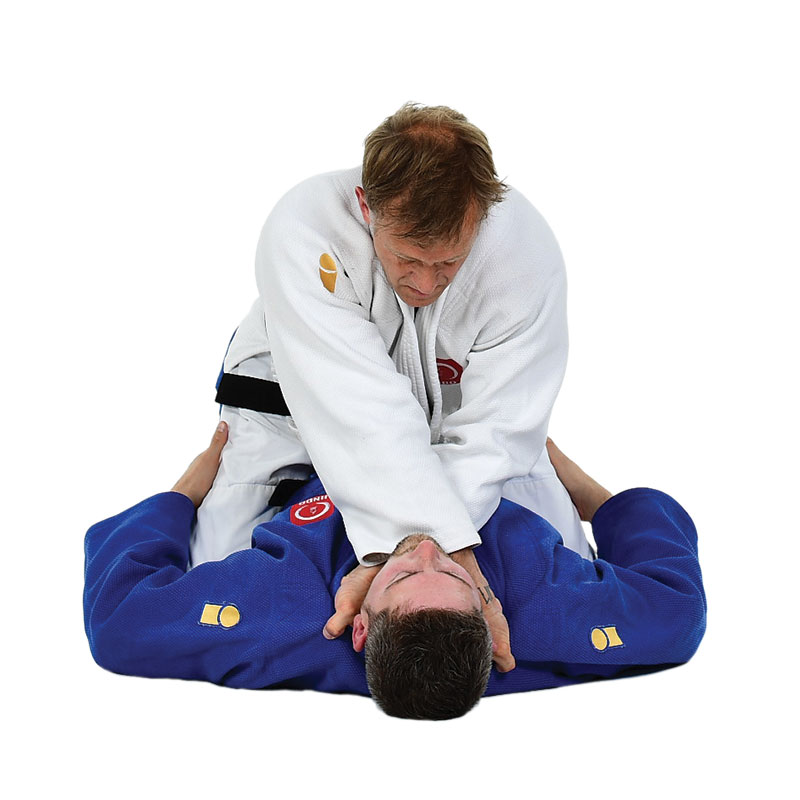Gyaku-juji-jime 逆十字絞 (Reverse Cross Choke)
Classification: Katame-waza → Shime-waza (Strangulation Techniques)
Purpose: A gi-based blood choke using a reverse grip to compress the carotid arteries, causing rapid incapacitation or submission.
Description
Gyaku-juji-jime means “reverse cross strangle.” This variation of the classic juji-jime uses a crossed grip with both palms facing upward, inserting the fingers inside the opponent’s lapels and wrapping the collar around the neck.
This choke is particularly effective from dominant positions like mount or closed guard, and is commonly used in both kata and randori, as well as in Brazilian Jiu-Jitsu under the name “cross-collar choke.”
How to Apply
-
Position:
-
Begin in a top position (e.g. mount or guard) with uke lying on their back.
-
-
Grip Setup:
-
Cross your hands and insert your fingers deep inside uke’s collar, each hand going into the opposite side.
-
Your palms face upward, with your thumbs outside the lapel.
-
This is the reverse of Nami-juji-jime (normal cross choke).
-
-
Choke Execution:
-
Pull your hands outward and back, tightening the collar across uke’s neck.
-
Simultaneously pull uke toward you with your arms and upper body while rotating your forearms to apply pressure.
-
The thumbs help guide and apply additional downward pressure on the neck.
-
Biomechanics
-
This choke works by compressing the carotid arteries, restricting blood flow to the brain, which can lead to loss of consciousness in seconds.
-
Forearm rotation and lapel tension create a powerful scissor-like closing force.
-
The deep finger grip creates leverage for control and a strong choke structure.
Did you know?
“Gyaku” (逆) means “reverse” or “opposite,” referring to the hand orientation compared to Nami-juji-jime. It’s also:
-
More powerful than Nami-juji-jime for many practitioners due to strong pulling mechanics.
This technique teaches control, timing, and the importance of grip placement in applying strangles safely and effectively.
